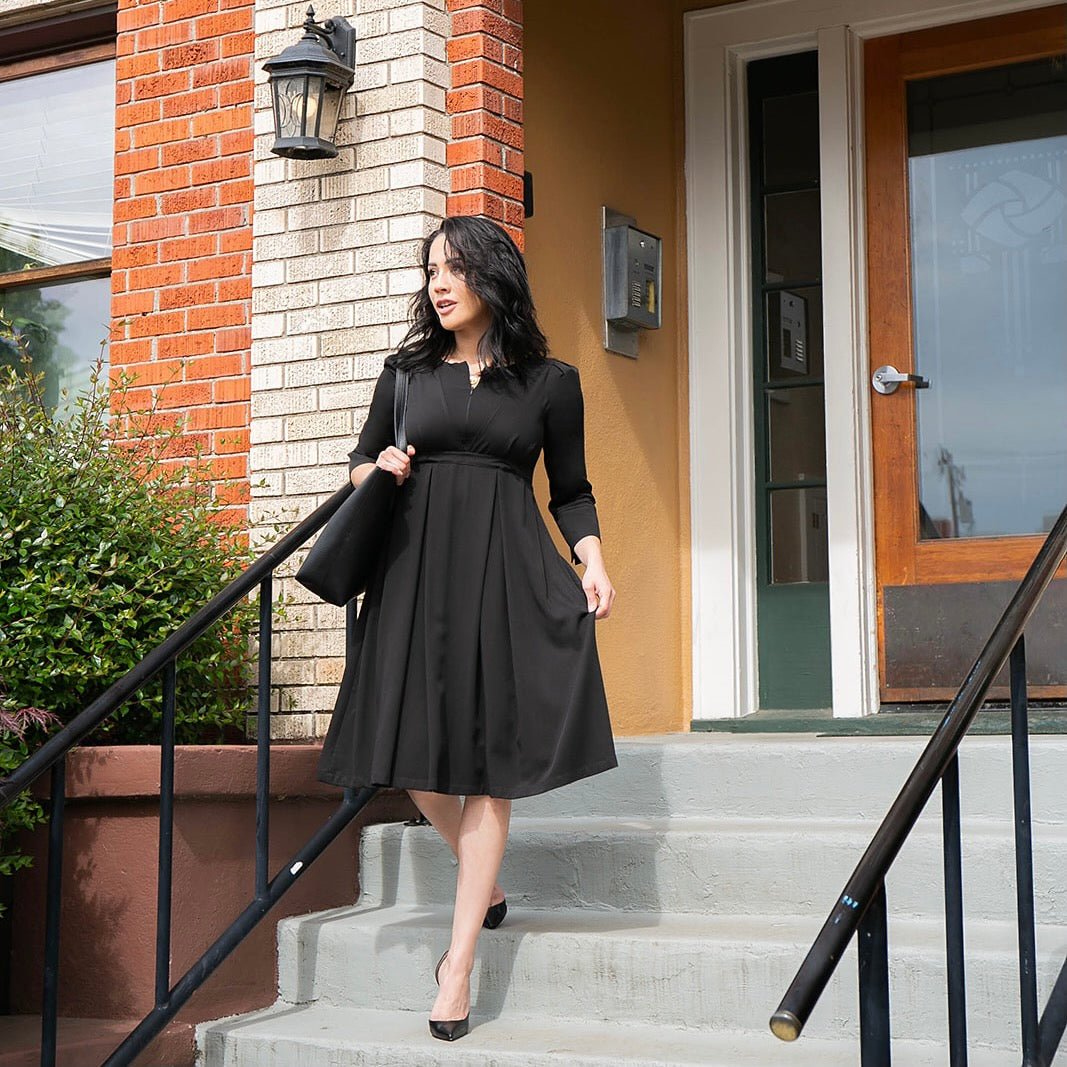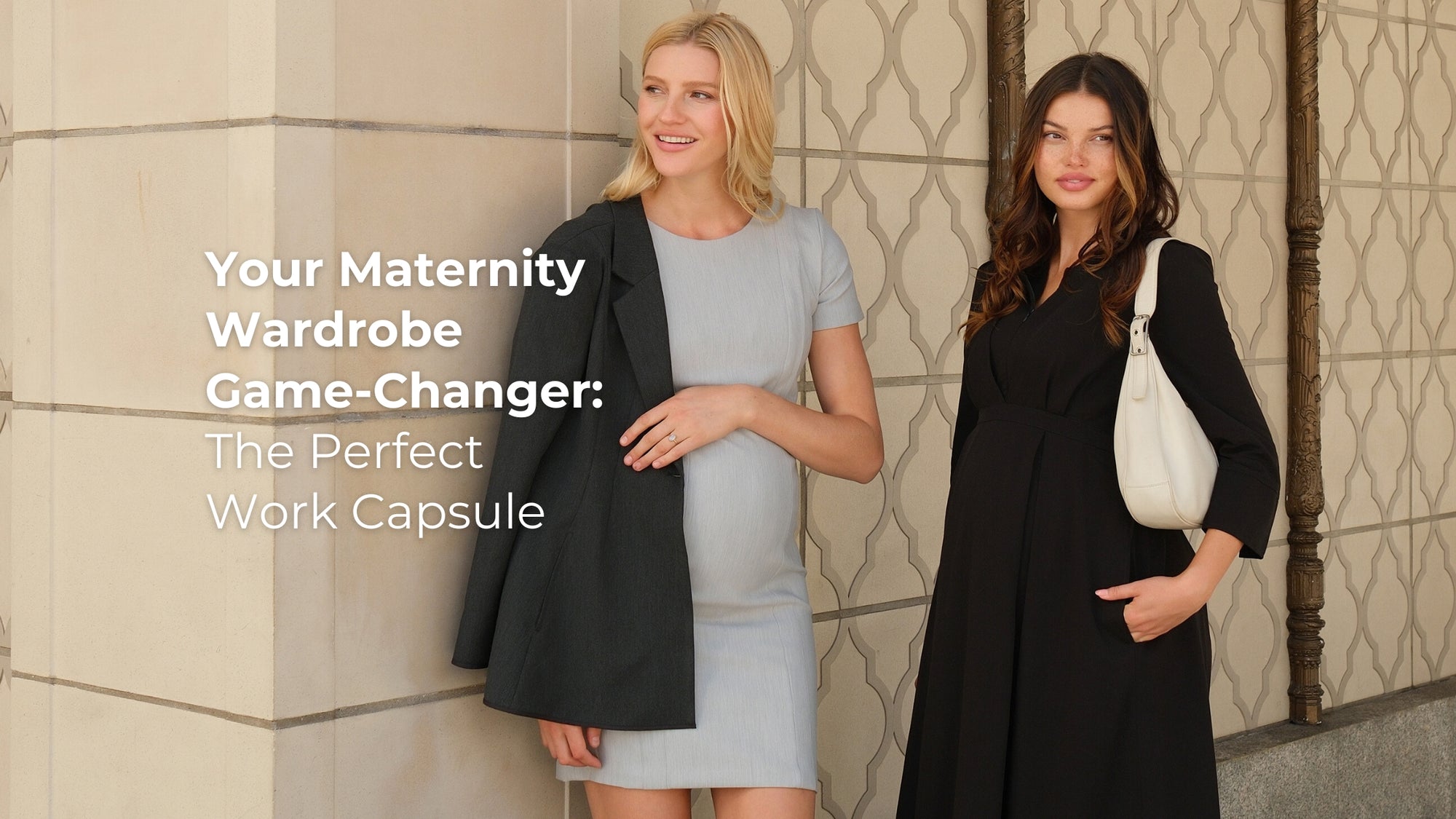Why MARION’s Sustainability Motto is "Better and Better," not "Perfect"
by Joy O'Renick, MARION Founder
Like tiny brushstrokes on a painting, it’s the thousand tiny decisions we make every day that eventually shape a bigger picture of what we value. As the founder of a sustainable maternity workwear brand, I find myself making those myriad little decisions every day, and trying to keep track of the larger meaning behind them. Because we’re a brand that makes elevated garments, opting for exceptional Italian suiting fabrics and exquisite tailoring over more economical choices, MARION’s quality cost is high. Add the up-charges for eco-friendly fabrics over “conventional” ones; the intense design needed to fashion garments that truly meet the needs of new mamas; and the additional minimum order quantities (MOQs) required to create our inclusive standard, petite, and extended sizing, and you’ve got a brand that is expensive to produce.
While we’re thrilled by the positive responses we’ve so far received from the diverse and impressive group of capital-M Mamas who make up our clientele, we’re also a newer brand still building our following. Translation, we don’t have money to burn (er, recycle). With that as our reality, we often feel strong pressure to find cost-saving measures, in our shipping, our packaging, our time, or our materials. Refraining again and again from cutting those small corners, so easy to justify, can be the real trick to building a sustainable brand.
I started MARION as an utter fashion newbie. I lacked understanding of the machinations of the industry, which most brand owners learned in design school or fashion internships. I had never thought about details like poly bags or how fabric is sourced, and didn’t know what questions to ask about sustainability. I just knew professional women needed to keep looking professional at work while toting around a watermelon, and quality maternity & nursing work clothes were so so so hard to find. So, I experienced more than one surprise in MARION 's infancy (pardon the pun), like when a shipment from a manufacturer with sustainable credentials arrived wrapped in layer upon layer of virgin plastic, or when conventional fabrics arrived after I had ordered and paid a surcharge for sustainable versions. Lessons learned.
I confess that I often feel anxious when assessing MARION’s impact on the planet. We don’t do everything as sustainably as I want, yet. We still aren’t big enough to get in with some of the larger manufacturers who have the best-documented sustainability and ethics practices, so we verify and assess to the best of our ability and resources. We don’t yet have all the new plastic out of our supply chain, and we carry a small number of styles made with conventional fabrics because we simply couldn’t find an acceptable alternative after weeks or months of searching.
When this happens, I step back and take stock of what we are doing well so far, then focus on setting achievable goals for improvement each quarter. When we fulfill orders, they ship in compostable or 100% recycled packaging. We are now asking our manufacturers to pull all virgin plastics out of our shipments, and to use compostable or 100% recycled garment bags and shipping containers instead. This usually results in a surcharge to us of about 15 to 30 cents per piece. While that hurts when it all comes in one bill for thousands of compostable bags, I remind myself that it honestly isn’t that much on a per-garment basis, and I’m not trying to buy a yacht.
More importantly, our manufacturers now have experience fulfilling more sustainably, and they’ve had to make new relationships with vendors of sustainable packaging to be able to complete our orders. After decades of doing things the conventional way, suppliers and manufacturers are most likely to change entrenched, harmful practices when they receive this kind of push from numerous brands. I have confidence that brands can harness our collective financial clout to normalize more sustainable order fulfillment, and eventually make it the standard, rather than a fringe practice with an up-charge. I am okay advocating with MARION’s dollar in the meantime.
MARION also prioritizes using sustainable fabrics and materials in each and every collection, always preferring Global Recycled Standard, Oeko-Tex Certified, and similar certified fabrics, meaning we put pressure on our mills to produce sustainable goods and on our manufacturers to build relationships with sustainable mills. While these fabrics still cost slightly more than “conventional” unsustainable fabrics, I believe this will change as the demand increases for such fabrics. Happily, I have already begun to see such a shift happening in my short time as a fashion owner. Garment shows like LA Textile and Texworld New York are filled with a burgeoning selection of eco-friendly sourcing options that can now meet the needs of almost any designer.
Finally, MARION is working to offset our shipping impact by using carbon neutral shipping wherever it’s available, and advocating for it when it’s not. We’ve been excited that Shop Pay, through our Shopify platform, offers carbon neutral shipping for purchases, reducing some of our legwork as we create our sustainable shipping infrastructure. Numerous other shipping platforms now offer carbon neutral shipping, responding to the growing global demand. Brands can easily find these platforms through their website’s app libraries.
Sustainability also comes down to what you’re selling. Beyond how it’s made and how it’s delivered, I believe strongly that fashion is most sustainable when it’s designed to last and to transcend short-lived trends. In the case of a fashion brand that designs for pregnant and breastfeeding women, fashion is most sustainable when it can do multiple jobs for one mama. It would likely be more profitable to design maternity clothes without nursing function, then sell a second set of nursing clothes to the same customer. Selling trendy garments could allow us to squeeze more sales out of one mama’s multiple pregnancies - your last maternity wardrobe is sooo out of date; better get a new one, and here’s our website. Lastly, we could sell “after” garments made for women recovering from childbirth and not quite ready to go back to their pre-maternity wardrobe.
That does add up to a lot of profit, and even more waste. At MARION, our garments go through a rigorous qualification process before they meet our “maternity & mama” standard. Will this style be timeless and always elegant, unaffected by the short-lived trends around it? Does this style look amazing on a pregnant woman with all sizes of baby bump? Does this style also have nursing access so our mama can wear it for breastfeeding and/or pumping? Is this access discreet, rather than screaming “I’M FOR NURSING, LOOK AT ME!”? And last but not least - will this style actually-really-not just saying it: look like a regular garment after all the baby things are past? If those questions can all be answered with a resounding “yes,” we make it and proudly put a MARION label on it. If not, it’s back to the digital drawing board and mannequin. Did we sell 1 style instead of 3? Yep. And that’s the idea.
(We’re also working to make a resale program to extend the life of our garments even further, and make them more accessible for women with fewer financial resources. Stay tuned for our resale launch next year.)
The last thing I would claim is that MARION has our sustainability figured out. We are doing the best we can with our current knowledge and resources, and we recommit to improving each day, quarter, and year. I am optimistic that the fashion industry, like much of the world, is in a moment of reckoning with ourselves and our impacts. That reckoning is already bringing about innovation in practices and products that will allow all of us to do things better and better. I hope this movement will only accelerate as we see both the urgency and the feasibility of doing something different. Smarter people than me will come up with those solutions - my part is to keep making each of those tiny little choices for my brand in a way that says “yes” to sustainability.


